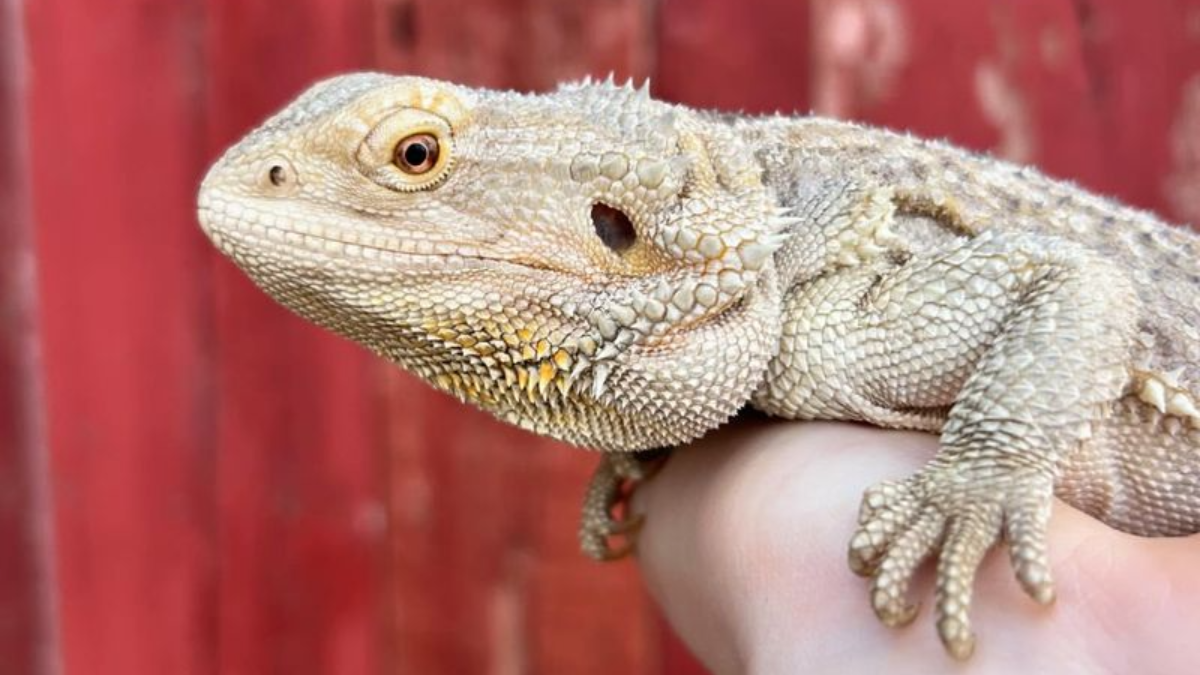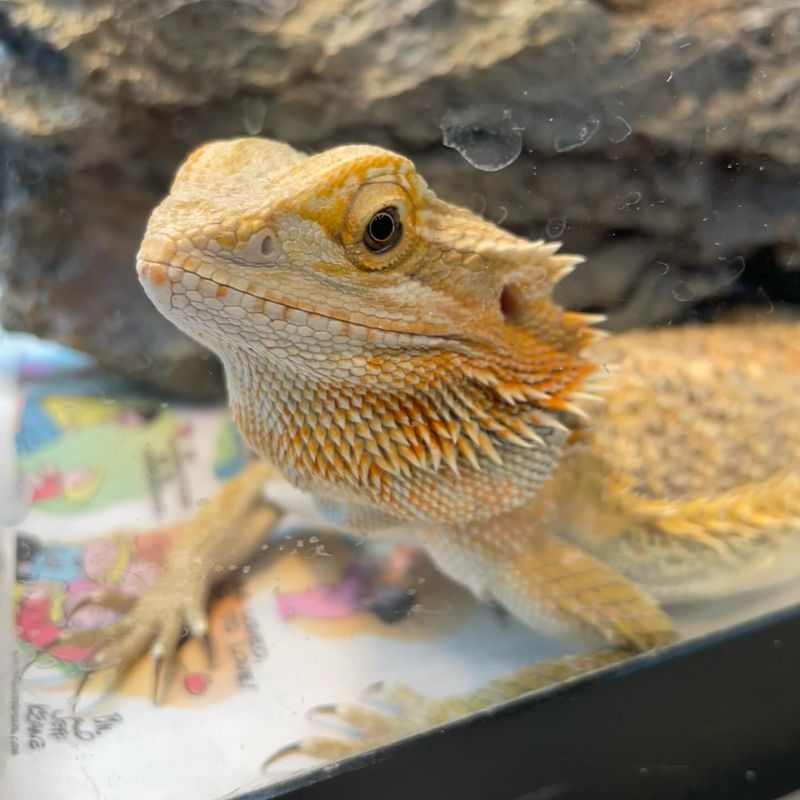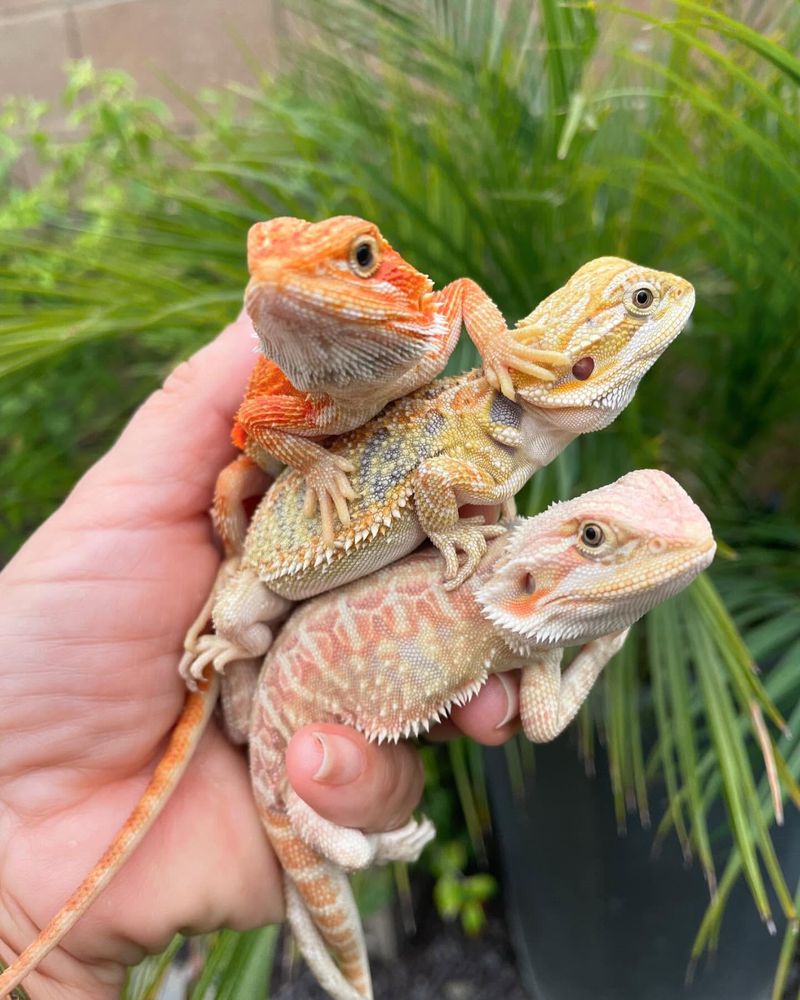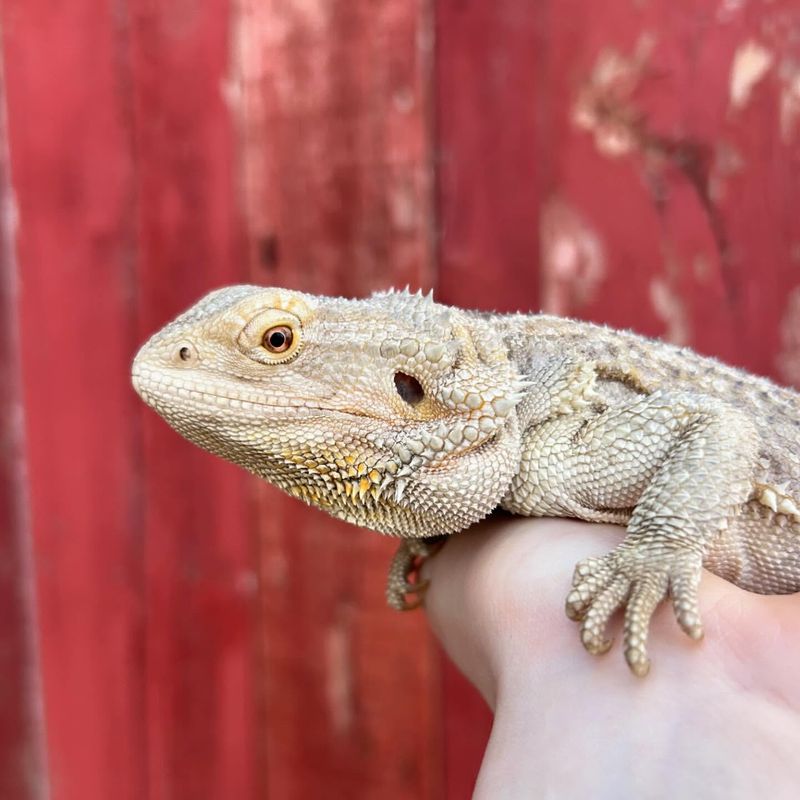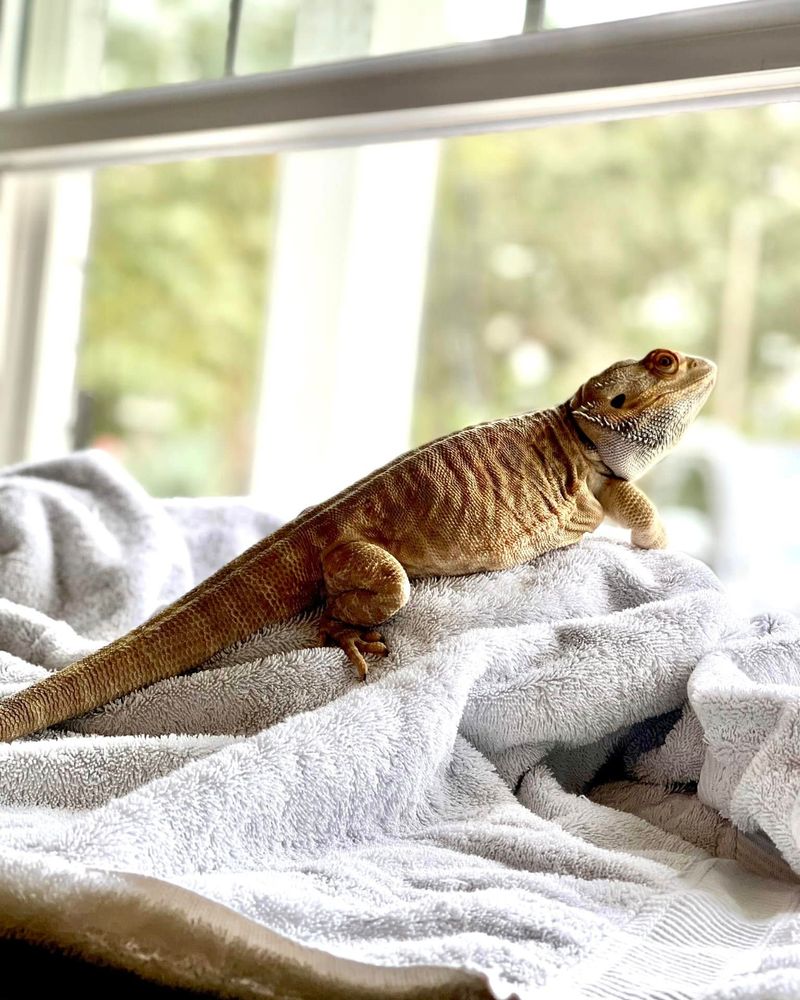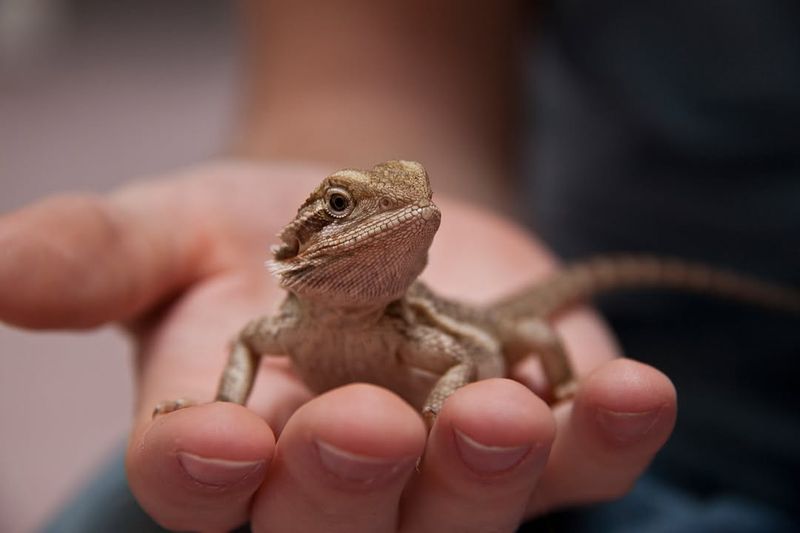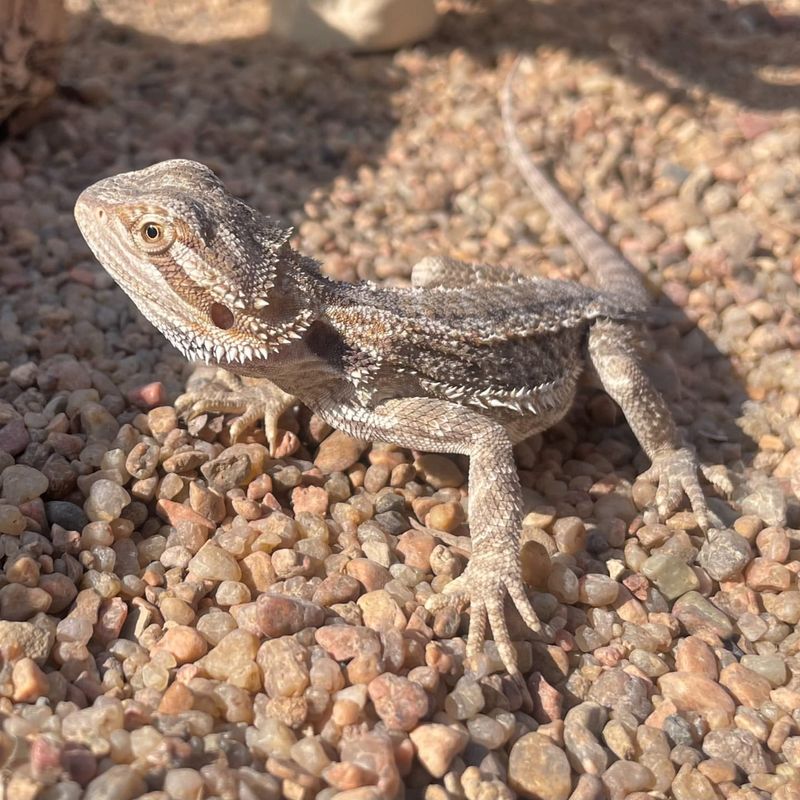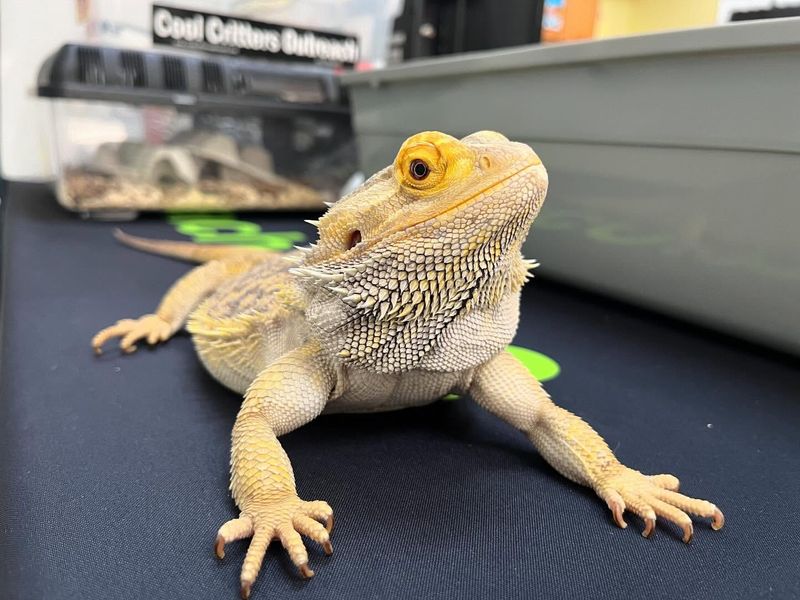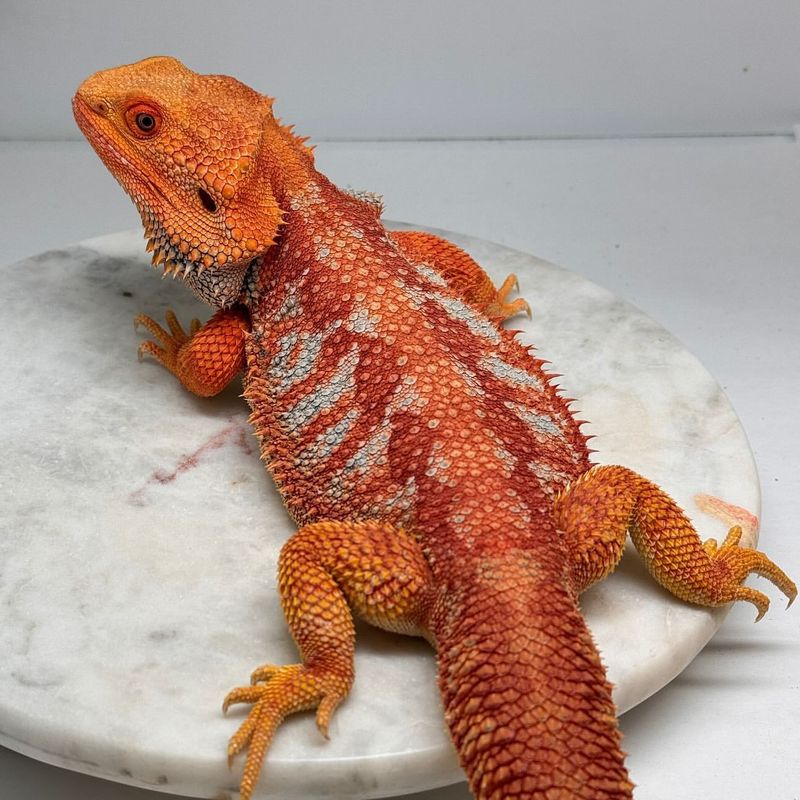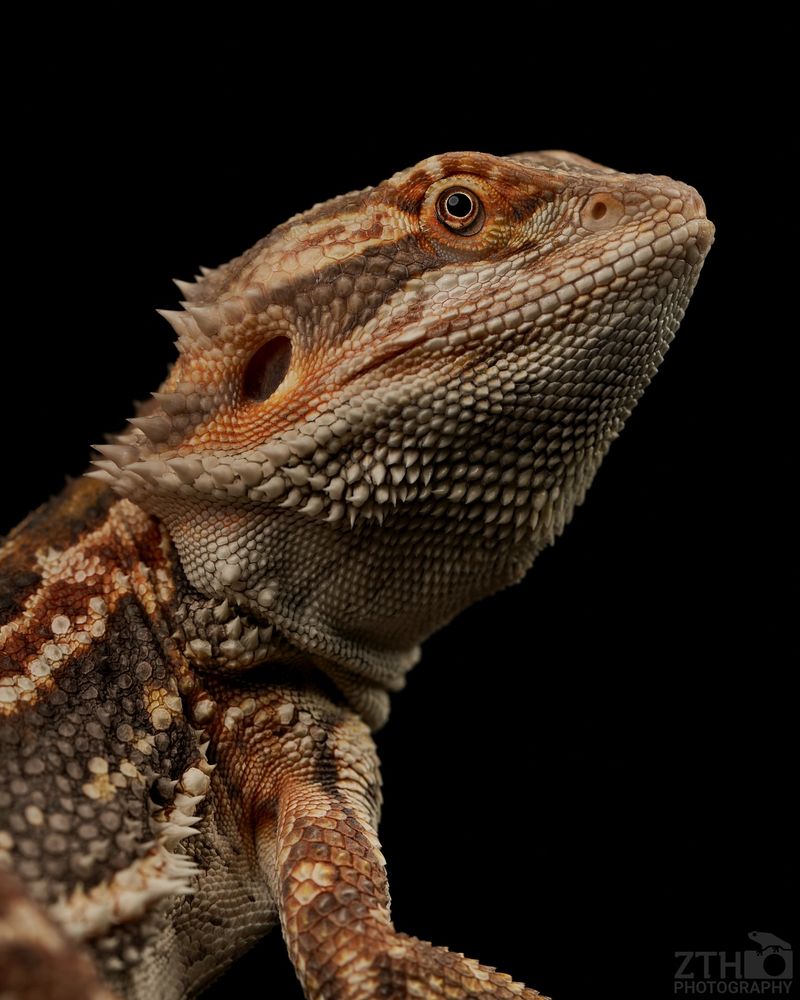📖 Table of Content:
Bearded dragons aren’t just your average pet reptiles—they’re like the quirky, chill best friends of the lizard world.
With their friendly demeanor, adorable head tilts, and that signature “beard” of spiky scales, these scaly cuties have stolen the hearts of reptile enthusiasts everywhere. But there’s so much more to these unique creatures than meets the eye!
From their secret communication signals to their impressive survival skills, these reptiles are full of surprises.
1. Unique Communication
Bearded dragons have a unique way of communicating using their beards. When threatened or feeling territorial, they puff out their beards and darken them to appear more intimidating. This behavior is not just for show; it’s a crucial part of their social interaction.
In the wild, male bearded dragons often use this display to establish dominance and ward off rivals. The beard’s color can change depending on the dragon’s mood, serving as a visual indicator of their emotional state.
However, this gesture is not reserved solely for aggression. In captivity, pet owners might notice their bearded dragons puffing out their beards during shedding or when curious about their surroundings.
2. Temperature Regulation
In their natural habitat, they bask in the sun to absorb warmth, which is essential for their metabolism and digestion. In captivity, providing a proper heat source is crucial to mimic their natural environment.
A basking spot with a temperature gradient allows the dragon to move between warm and cool areas, maintaining optimal body temperature. It’s common to see a bearded dragon with its mouth open while basking; this is known as gaping and helps them release excess heat.
Temperature regulation is vital for their health, affecting everything from their appetite to their immune system. Pet owners must ensure that their bearded dragon’s enclosure is set up with the right temperature zones to support these natural behaviors, promoting a happy and healthy life.
3. Omnivorous Diet
In the wild, their diet varies widely and includes insects, small rodents, and a variety of vegetation. This diverse diet provides them with essential nutrients needed for growth and health.
In captivity, pet owners must replicate this diet by providing a balanced mix of insects like crickets and mealworms, along with fresh greens and vegetables.
Young bearded dragons require more protein for growth, while adults thrive on a diet higher in plant matter. Offering a variety of foods not only meets their nutritional needs but also stimulates their natural foraging instincts.
4. Habitat and Adaptation
Native to the arid deserts and woodlands of Australia, bearded dragons have adapted remarkably well to these harsh conditions. Their sandy-colored skin provides excellent camouflage, helping them blend into their environment to avoid predators.
Bearded dragons are also skilled climbers and can often be found perched on rocks and branches, basking in the sun.
These adaptations serve them well both in the wild and in captivity, where replicating their natural habitat is key to their well-being. A terrarium setup that mimics the Australian desert, with appropriate substrates and climbing structures, allows them to exhibit natural behaviors.
5. Lifespan in Captivity
On average, they can live for 10 to 15 years, with some individuals reaching up to 20 years. Their longevity depends on factors such as diet, habitat, and overall care.
Providing a stable and enriching environment plays a significant role in extending their life. Regular health checks, a balanced diet, and appropriate UVB lighting contribute to their well-being.
Unlike in the wild, where predators and environmental challenges can shorten their lifespan, captive bearded dragons benefit from consistent care and protection.
6. Social Interaction with Humans
Bearded dragons are known for their docile and friendly nature, making them excellent companions for reptile enthusiasts. Unlike many reptiles, they often enjoy human interaction and can form bonds with their owners.
Regular handling helps build trust and reduces stress, making bearded dragons more comfortable in their environment. It’s essential to handle them gently, supporting their body and avoiding sudden movements.
Many owners find that their bearded dragons recognize them and respond positively to their presence. This social interaction enriches both the dragon’s and the owner’s experience, fostering a unique connection.
7. Unique Sleep Patterns
These reptiles are diurnal, meaning they are active during the day and sleep at night. In captivity, they often find cozy spots to rest, such as under rocks or within shelters, mimicking their natural behavior in the wild.
Interestingly, bearded dragons can experience a form of sleep similar to REM, indicating a complex sleep cycle. This discovery has intrigued scientists, as it suggests a level of cognitive function not previously associated with reptiles.
Ensuring that they have a quiet and dark space during their rest period supports their health and well-being.
8. Brumation Behavior
Bearded dragons undergo a process known as brumation, similar to hibernation in mammals. During brumation, they enter a semi-dormant state, reducing their activity and food intake. This behavior is triggered by seasonal changes, particularly a drop in temperature and daylight hours.
In captivity, bearded dragons may exhibit brumation even when conditions are stable, mimicking their natural instincts. For owners, recognizing the signs of brumation is crucial to ensure proper care.
During this period, dragons may sleep more, eat less, and become less responsive. It’s important to monitor their health, providing water and ensuring they remain comfortable.
9. Color Morphs and Variations
Bearded dragons are available in a wide range of color morphs and variations, thanks to selective breeding. These morphs offer diverse colors and patterns, from the classic sandy hues to vibrant reds and yellows.
Each morph has its own unique charm, appealing to different preferences among reptile enthusiasts.
In the wild, natural coloration aids in camouflage, while in captivity, these morphs are bred for aesthetic appeal. It’s important for potential owners to research and select morphs that fit their lifestyle and care capacity.
Some morphs may have specific care requirements, making it crucial to understand their needs.
10. The Bearded Dragon’s Beard
The bearded dragon’s beard is a distinctive feature that sets it apart from other reptiles. Composed of spiky scales located under the chin, the beard can expand and darken, serving various purposes.
While often associated with defensive behavior, the beard’s display also plays a role in social interaction and mating rituals. During courtship, males may puff out their beards to attract females, showcasing their prowess and strength.
In social hierarchies, the beard helps establish dominance, with dragons using this visual cue to communicate without the need for physical confrontation. This behavior is not limited to wild bearded dragons; pet dragons exhibit similar displays.
